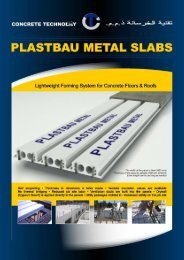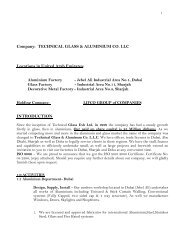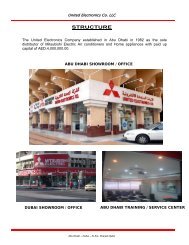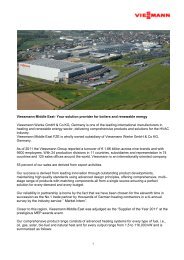Pearl Building Rating System - Estidama
Pearl Building Rating System - Estidama
Pearl Building Rating System - Estidama
You also want an ePaper? Increase the reach of your titles
YUMPU automatically turns print PDFs into web optimized ePapers that Google loves.
Calculations and<br />
Methodology<br />
The Habitat Creation or Restoration Strategy must describe the following:<br />
� The existing condition of the habitat creation or restoration area and the impacts<br />
that have caused or are continuing to cause the degradation or loss of habitat on<br />
the site.<br />
� The habitat to be created or restored, including justification for the habitat type.<br />
� Plans illustrating the location of the habitat creation / restoration area. Mark other<br />
existing or proposed areas of the same, or similar, habitat type and description of<br />
any existing or proposed connections between them.<br />
� A description of the structure and function of the habitat type, including interrelationships<br />
between topography, soil, microclimate, light and shade, flora and<br />
fauna and minimum habitat size for effective habitat function.<br />
� A strategy for re-creation of the structure and function of the habitat type, linked<br />
to a series of KPIs providing the measurement tool for monitoring success of habitat<br />
creation or restoration of the site. These must be based on the KPIs established in<br />
NS-R1 and are to include the following as a minimum:<br />
o Soil;<br />
o Flora;<br />
o Fauna;<br />
o Microclimate;<br />
o Topography and views;<br />
o Drainage; and<br />
o Minimum habitat size for effective habitat function.<br />
� Plant palette to be used.<br />
� The methodology for habitat creation or restoration, including grading, soil<br />
restoration and seeding or planting of the site and the proposed strategies to<br />
mitigate the existing degrading factors.<br />
� A 10 year monitoring and management strategy, including monitoring of soil<br />
conditions, health, species diversity and abundance (to be incorporated into NS-<br />
R3).<br />
The species qualifying for this credit must be native or adaptive plant species and<br />
drought and / or saline tolerant, with a proven track record to survive and thrive in an<br />
environment similar to the proposed site.<br />
Appropriate candidate areas for habitat creation or restoration include but are not<br />
limited to the following Priority Habitats: Intertidal Mudflats, Mangroves, Vegetated<br />
Sandy Beaches, Seagrass, Coral, Wadis, Sand Sheets and Low Dunes, Interdunal Plains<br />
and High Dunes, Alluvial Plains, Jebels, or other significant habitat types.<br />
Where possible, the habitat type to be created must be located in one area of the site<br />
and be connected to the same or similar habitat type either within the site or adjacent<br />
to the site.<br />
The Credit can also be awarded if a combination of on-site and off-site measures have<br />
been implemented but this has to be cleared in advance by the UPC.<br />
Ecological corridors may be fragmented by roads up to Boulevard width, as defined by<br />
the UPC Urban Street Design Manual. Underpasses or ‘green bridges’ must be provided<br />
under/over highways to provide continuous habitat.<br />
References See NS-R1 Natural <strong>System</strong>s Assessment<br />
<strong>Pearl</strong> <strong>Building</strong> <strong>Rating</strong> <strong>System</strong>: Design & Construction, Version 1.0, April 2010 48 of 223







